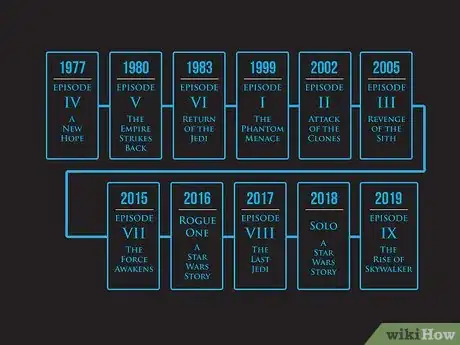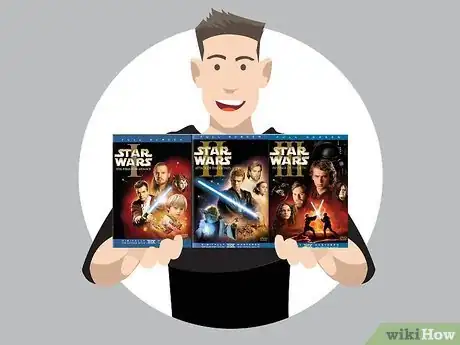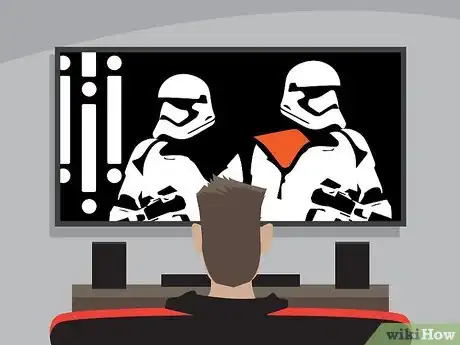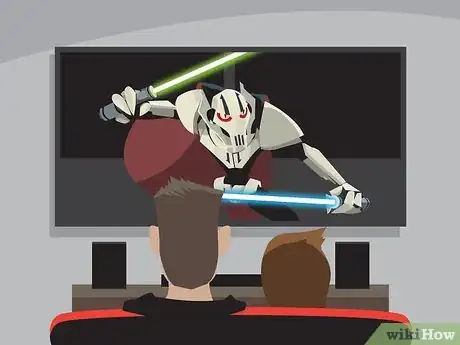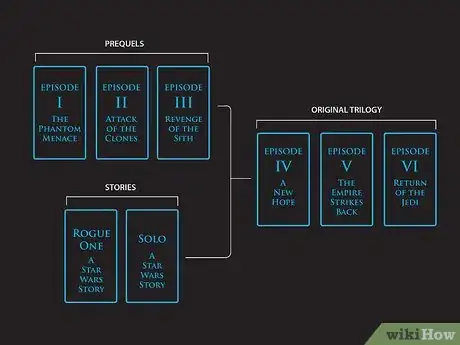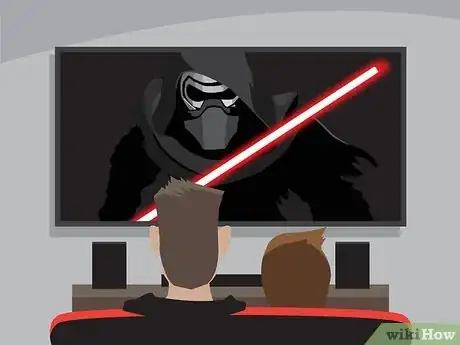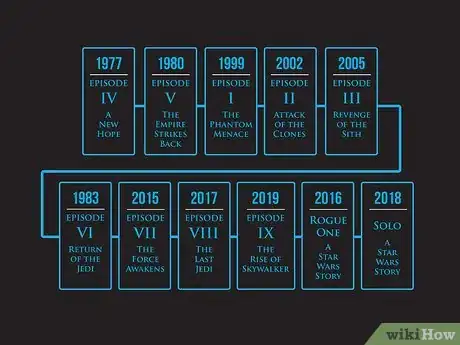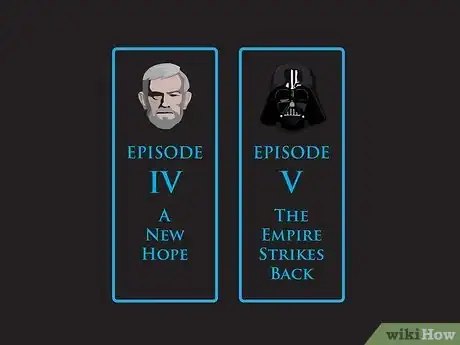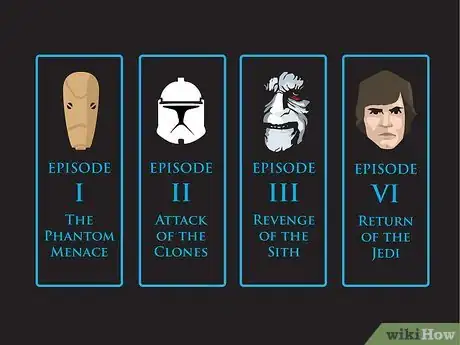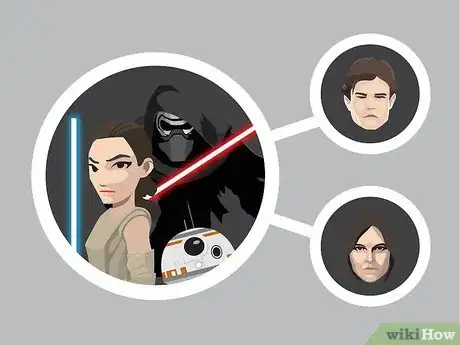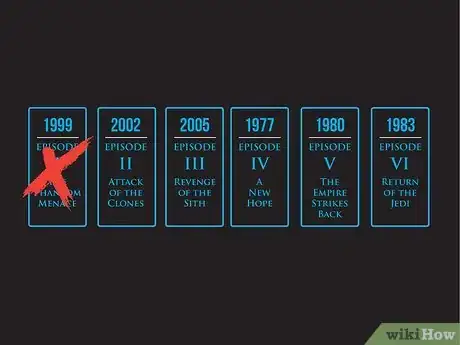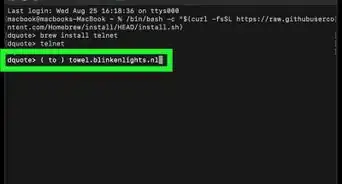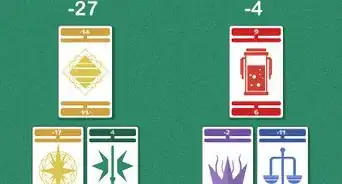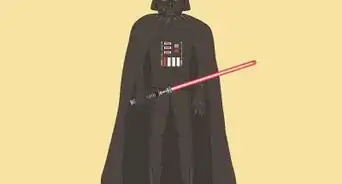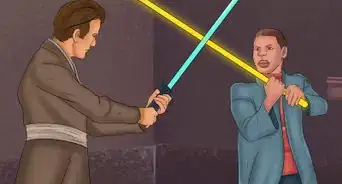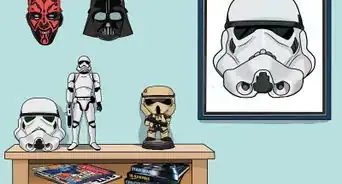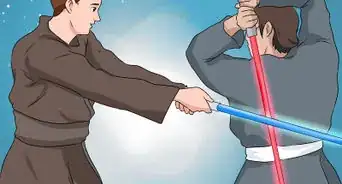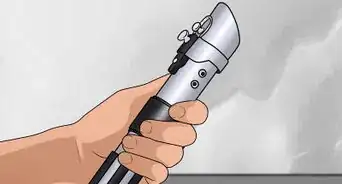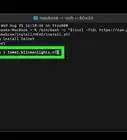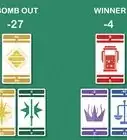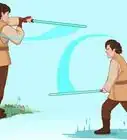This article was co-authored by wikiHow staff writer, Eric McClure. Eric McClure is an editing fellow at wikiHow where he has been editing, researching, and creating content since 2019. A former educator and poet, his work has appeared in Carcinogenic Poetry, Shot Glass Journal, Prairie Margins, and The Rusty Nail. His digital chapbook, The Internet, was also published in TL;DR Magazine. He was the winner of the Paul Carroll award for outstanding achievement in creative writing in 2014, and he was a featured reader at the Poetry Foundation’s Open Door Reading Series in 2015. Eric holds a BA in English from the University of Illinois at Chicago, and an MEd in secondary education from DePaul University.
wikiHow marks an article as reader-approved once it receives enough positive feedback. In this case, 85% of readers who voted found the article helpful, earning it our reader-approved status.
This article has been viewed 110,665 times.
Learn more...
Over the course of the last 50 years, 11 Star Wars films have been released—and that’s only counting the theatrical releases. Whether you’re watching the series for the first time or trying to re-watch the entire series in preparation for The Rise of Skywalker, the question of how you should watch the Star Wars films is a hotly-debated topic. There are 3 popular viewing orders to choose from: sorting by release date, watching in chronological order, or using the Rinster method to rearrange the films and make them easier to understand. However you choose to watch them, remember that there’s no required way to watch these films, and you should choose a method that you think will be the most enjoyable for you!
Steps
Watching by Release Date
-
1View the films in the order they were released for the original experience. If you want the authentic experience of seeing the films in their original order, watch them in the order that they were released. This is considered by many fans to be the best method for viewing the Star Wars films, but there are several downsides. The tone shift from Return of the Jedi to The Phantom Menace may be jarring, and the narrative can get kind of confusing since you’re watching the films out of narrative order.
- If you’re planning on watching the movies with younger children, starting with the older films may be kind of tough if they’re used to contemporary animation.
Release Order:
A New Hope (Episode IV) - 1977
The Empire Strikes Back (Episode V) - 1980
Return of the Jedi (Episode VI) - 1983
The Phantom Menace (Episode I) - 1999
Attack of the Clones (Episode II) - 2002
Revenge of the Sith (Episode III) - 2005
The Force Awakens (Episode VII) - 2015
Rogue One (A Star Wars Story) -2016
The Last Jedi (Episode VIII) -2017
Solo (A Star Wars Story) - 2018
The Rise of Skywalker (Episode IX) - 2019
-
2Start by viewing the original trilogy. Starting with 1977’s A New Hope and ending with 1983’s Return of the Jedi, view the original trilogy first. The original films are considered to be classics by critics and fans alike, and starting with the iconic Luke Skywalker’s storyline is an excellent way to begin the series.[1]
- There are 2 different versions of the original trilogy: the original release, and the 1997 remastered version. The remastered version isn’t narratively different—it has all the same characters and plot points—but the animation is updated. This may be a good choice if you’re watching with younger viewers, although film purists tend to shy away from the updated versions.
Advertisement -
3Watch the prequels after you’ve finished the original trilogy. Once you’ve completed Luke Skywalker’s story arc, move on to the prequels. Start with The Phantom Menace, then watch Attack of the Clones. Close out the second trilogy with Revenge of the Sith to complete Darth Vader’s backstory and learn about Luke’s origin. You’ll also get to see Obi-Wan and Anakin Skywalker when they were kids, which is fun if you like making connections between films.[2]
- The prequels aren’t essential to understanding everything that happens in the original trilogy, and their tone is radically different than the other Star Wars films (they’re goofier and emphasize the comedy). Some adult viewers that are interested in the action and main story opt to cut the prequels altogether.
- The prequels take place narratively before the original trilogy, meaning that the events in these films happened before the start of 1977’s A New Hope. This can become a tough narrative to follow if you’re taking long breaks between viewings, since the events at the end of the last prequel (Revenge of the Sith) lead into the first film (A New Hope).
-
4View the Disney releases in order, including the “Stories” if you want. Once you’re done with the prequels, watch the newer Disney films. Start with The Force Awakens and follow it with The Last Jedi. Close out the series with The Rise of Skywalker. You can watch Rogue One after The Force Awakens and Solo after The Last Jedi if you want, but those 2 films are called “stories” and are inessential to the main story if you want to skip them.[3]
- The Force Awakens, The Last Jedi, and The Rise of Skywalker are collectively called the “sequel trilogy.” They’re an extension of the main story line from the prequels and the original trilogy.
- Rogue One and Solo are called “stories” because they both have the subtitle A Star Wars Story. They provide some context and backstory for the main films, but they aren’t mandatory viewing. It’s totally up to you whether you want to include them or not, although they’re critically considered to be solid additions to the Star Wars universe.
Watching in Chronological Order
-
1Opt to view the films chronologically to fully understand the story line. One of the major downsides of watching the films in the order that they were released is that the narrative can become hard to follow. This is especially a problem when going from the first trilogy to the prequels and from the prequels to the sequel trilogy. To make the story easier to follow, rearrange the order that you watch the films to put the story in chronological order.
- Since the prequels tend to be a little goofier and lighter than the other films, this is a good choice if you have younger kids that you want to share the films with. It’ll also make the story easier to follow, which can be a problem for younger viewers.
Chronological Order:
The Phantom Menace (Episode I) - 1999
Attack of the Clones (Episode II) - 2002
Revenge of the Sith (Episode III) – 2005
Solo (A Star Wars Story) (Optional) - 2018
Rogue One (A Star Wars Story) (Optional) -2016
A New Hope (Episode IV) - 1977
The Empire Strikes Back (Episode V) - 1980
Return of the Jedi (Episode VI) - 1983
The Force Awakens (Episode VII) - 2015
The Last Jedi (Episode VIII) -2017
The Rise of Skywalker (Episode IX) - 2019
-
2Start the series by watching the prequels first. To watch the films in chronological order, go back to the beginning of the narrative arc when Darth Vader was still a kid. Start with The Phantom Menace and watch Attack of the Clones next. Finish the prequels off by watching Revenge of the Sith.
- One of the downsides to this method is that it places the prequels first. The prequels are almost universally considered to be the worst films in the canon, and viewers with a more critical eye may be turned off to the entire endeavor if they start with the prequels.
-
3Watch Solo, followed by Rogue One, after Revenge of the Sith. Solo and Rogue One are optional, but if you want to include them, watch them after the last prequel. They’ll provide some interesting backstory for a few key players in the original trilogy, and they’re generally considered to be good films. You won’t be totally lost if you choose to skip them though.[4]
- Rogue One is largely about the origins of the Death Star and the Empire’s first foray into conquering the universe. Solo is Han Solo’s backstory, and you’ll learn a lot about Chewbacca, Lando Calrissian, and the Millennium Falcon.
-
4See the original trilogy after the prequels or the “stories.” After you’ve wrapped up the prequels and either seen or skipped the stories, watch the original trilogy. A New Hope picks up right where Revenge of the Sith ends, so you’ll have an easier time identifying key characters, knowing every character’s motivation, and tracking the events as they unfold in the story.
- One of the upsides to watching chronologically is that the Empire’s violent behavior makes a little more sense at the beginning of the A New Hope.
- Unfortunately, the big twist at the end of The Empire Strikes Back won’t be as surprising since it’s explained thoroughly in the prequels. This is considered to be the biggest downside of watching in chronological order.
-
5Watch the Disney films to catch up to the most recent events. Close out your viewing experience by watching the sequel trilogy. Watch The Force Awakens, The Last Jedi, and The Rise of Skywalker to finish the Star Wars films.
- The events in the sequel trilogy contain a lot of references to the original trilogy, and many of the characters from those original films make an appearance.
Selecting the Rinster Order
-
1Go with the Rinster order to enhance the impact of Return of the Jedi. This viewing order is named after Ernest Rinster, the fan who invented it. The goal of this viewing order is to preserve the twist ending at the end of The Empire Strikes Back. Essentially, you start with the first 2 films in the original trilogy and then watch the prequels before watching the third film. This is sort of a compromise between the chronological order and the release date order, and treats the prequel films like a long flashback before finishing the original trilogy.
- For many diehard fans of the Star Wars films, this is the best way to view the films since it reduces the role of the prequels by treating them like a long flashback. This also preserves the clarity of the narrative while increasing the emotional impact of the final film in the original trilogy. It will also increase the emotional impact of Return of the Jedi since you’ll be more invested in Vader’s backstory.
The Rinster Order:
A New Hope (Episode IV) - 1977
The Empire Strikes Back (Episode V) - 1980
The Phantom Menace (Episode I) (Optional for machete method) - 1999
Attack of the Clones (Episode II) - 2002
Revenge of the Sith (Episode III) – 2005
Return of the Jedi (Episode VI) - 1983
The Force Awakens (Episode VII) - 2015
The Last Jedi (Episode VIII) -2017
The Rise of Skywalker (Episode IX) – 2019
Rogue One (A Star Wars Story) -2016
Solo (A Star Wars Story) - 2018
-
2Watch the first 2 films in the original trilogy. To follow the Rinster order, watch A New Hope first. Then, follow it up with The Empire Strikes Back. Once you’ve completed the first 2 films in the original trilogy, hold off on the final film and set it aside for later.[5]
-
3Insert the prequels before finishing the trilogy with Return of the Jedi. After you finished The Empire Strikes Back, throw on the prequel trilogy. Watch The Phantom Menace, Attack of the Clones, and Revenge of the Sith. The Empire Strikes Back ends with a big reveal relating to Darth Vader and Luke Skywalker’s relationship, and the prequels are all about Darth Vader’s youth and his descent into villainy, so you’ll know a lot more about Vader and Luke when you finish with Return of the Jedi![6]
- Since Return of the Jedi ends right before the climax of the original trilogy, you should have a pretty easy time following what’s going on when you come back to the originals.
-
4Watch the contemporary Disney films, saving Rogue One and Solo for last. Finish up with the sequel trilogy, which follows Rey, Kylo Ren, and Finn—new characters that are the spiritual successors to Luke, Vader, and Han Solo. Many of the characters in the original trilogy show up in these films, so you’ll have a blast seeing how their characters develop as they get older! Save Rogue One and Solo for last if you want to watch them.[7]
- With the Rinster order, Rogue One and Solo serve kind of like separate stories that aren’t related to the main narrative arc. This keeps the order faithful to the intended purpose of the films, since Rogue One and Solo aren’t intended to be core parts of the main story.
Making Common Adjustments
-
1Slot Rogue One in between A New Hope and The Empire Strikes Back for more backstory. If you’re watching chronologically or using the Rinster order, you can watch Rogue One after A New Hope but before The Empire Strikes Back if you’d like. Rogue One provides ton of context for the Death Star and the nature of the Rebellion’s motivation for fighting the Empire, which will enrich the viewing experience of The Empire Strikes Back.[8]
- The nature of the conflict between the Rebellion and the Empire is sort of left unexplained in the original films. The Empire are simply taken to be evil and the Rebellion is assumed to be good. Rogue One gives a lot of background information about why these 2 factions are fighting in the first place.
-
2Watch Rogue One and Solo before starting the original trilogy for tons of context. If you’re watching chronologically or with the Rinster method, you can choose to watch both of the optional films first. Doing this reveals a lot of the backstory in the original trilogy, and watching these films first won’t ruin any plot points or reveals since they’re not necessary to understanding the main story.[9]
- The actual order of these 2 films doesn’t matter if you’re watching them first.
-
3Remove The Phantom Menace to streamline the Rinster Order. This method is commonly referred to as the “machete method” because it cuts the first prequel film, which many fans believe is the weakest film in the canon. This is a good choice if you want to streamline the story, since The Phantom Menace doesn’t add a ton of important information to the story and most of the events are inconsequential to the other films.
- The Phantom Menace is visually interesting, but the story is often criticized as being boring and silly. If you’re into action and cool set pieces though, it’s not a bad viewing experience.
-
4Watch the prequels last and pretend they’re a flashback. Many diehard fans dislike all of the prequels, and choose to put them at the very end of the series to keep the tone, story, and tempo of the original and sequel trilogy consistent. You can even choose to cut them altogether if they don’t seem like something you’re interested in!
Tip: Don’t write off the prequels based on everyone else’s opinion. There are people that really love these films, and you may be one of them. If you’ve never seen them, try watching The Phantom Menace and simply turn it off if you get through an hour or so and aren’t hooked.
Community Q&A
-
QuestionHow do I stand up against all the Prequel hate I see on the net? As a lover of Eps 1, 2 and 3, I hate it, but I'm scared of cyber-bullying.
 PamelaCommunity AnswerA lot of people feel the same. Know that if someone begins cyber-bullying you, they are immature. Don't pay any attention. Stand up for what you like and ignore rude comments from others.
PamelaCommunity AnswerA lot of people feel the same. Know that if someone begins cyber-bullying you, they are immature. Don't pay any attention. Stand up for what you like and ignore rude comments from others. -
QuestionWhere does "The Force Awakens" fit in?
 Community AnswerIn the storyline, "Force Awakens" goes after "The Return of the Jedi."
Community AnswerIn the storyline, "Force Awakens" goes after "The Return of the Jedi." -
QuestionIs The Force Awakens the start of the third trilogy of the Star Wars saga?
 Community AnswerYes. It is followed by The Last Jedi and The Rise of Skywalker.
Community AnswerYes. It is followed by The Last Jedi and The Rise of Skywalker.
References
- ↑ https://www.starwars.com/news/from-a-certain-point-of-view-what-is-the-best-star-wars-viewing-order
- ↑ https://www.starwars.com/news/from-a-certain-point-of-view-what-is-the-best-star-wars-viewing-order
- ↑ https://www.starwars.com/news/from-a-certain-point-of-view-what-is-the-best-star-wars-viewing-order
- ↑ https://www.thrillist.com/entertainment/nation/solo-star-wars-timeline
- ↑ https://www.washingtonpost.com/lifestyle/in-what-order-should-you-watch-the-star-wars-movies/2015/12/09/25e96e88-9cf8-11e5-a3c5-c77f2cc5a43c_story.html
- ↑ https://www.washingtonpost.com/lifestyle/in-what-order-should-you-watch-the-star-wars-movies/2015/12/09/25e96e88-9cf8-11e5-a3c5-c77f2cc5a43c_story.html
- ↑ https://www.washingtonpost.com/lifestyle/in-what-order-should-you-watch-the-star-wars-movies/2015/12/09/25e96e88-9cf8-11e5-a3c5-c77f2cc5a43c_story.html
- ↑ https://time.com/4594017/rogue-one-star-wars-timeline/
- ↑ https://www.thrillist.com/entertainment/nation/solo-star-wars-timeline
About This Article
If you want to watch the Star Wars series in the order it was released, start with episodes IV, V, and VI so you'll understand the story's context and politics from the start. Then, follow up with episodes I, II, and III to get the main characters' backstories. Make sure to pay extra attention to keep the characters and plot straight. Alternatively, use the more popular chronological order, in which you start with Episode 1 and work through to Episode 6 so the plot develops naturally. Keep reading to learn how to use the machete method, which skips Episode I!
